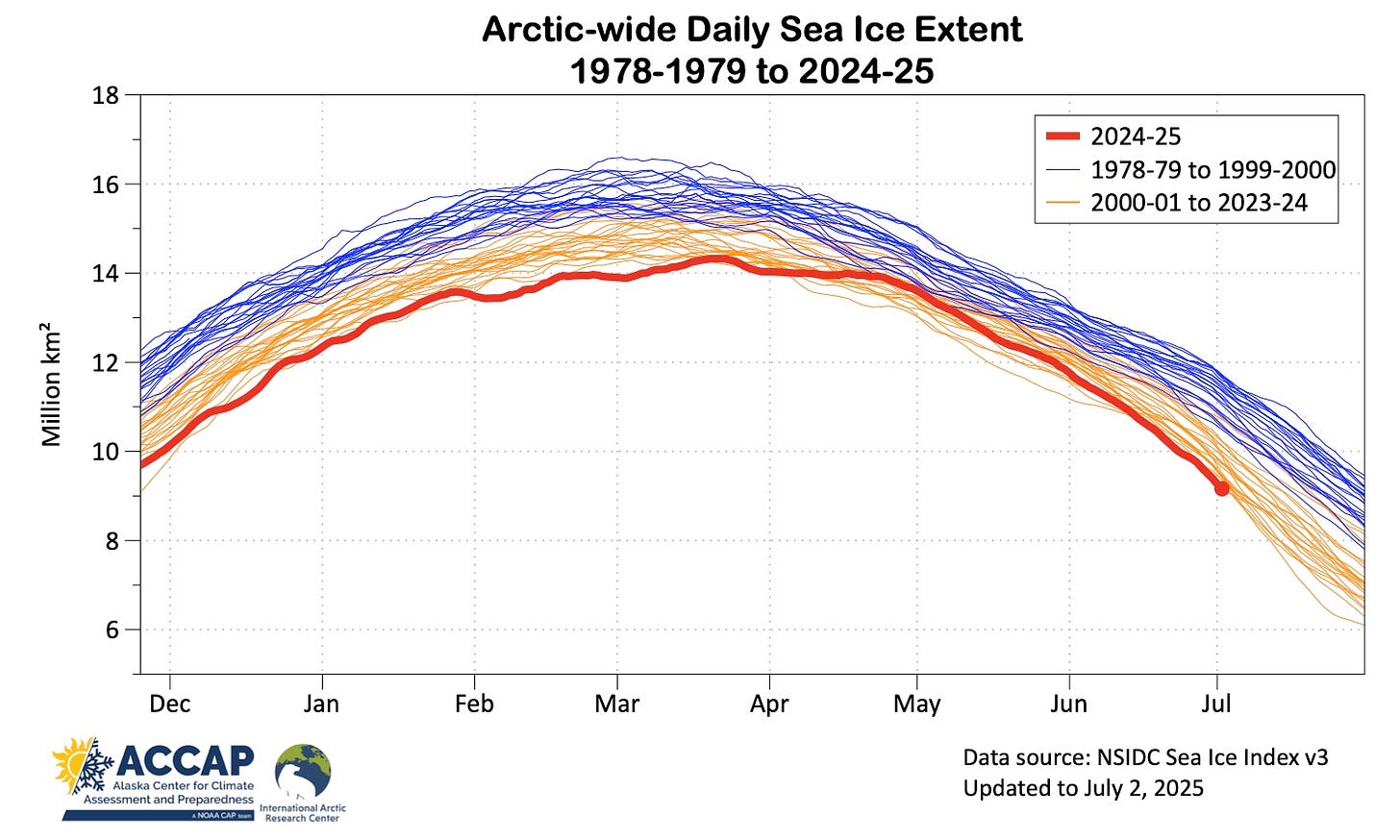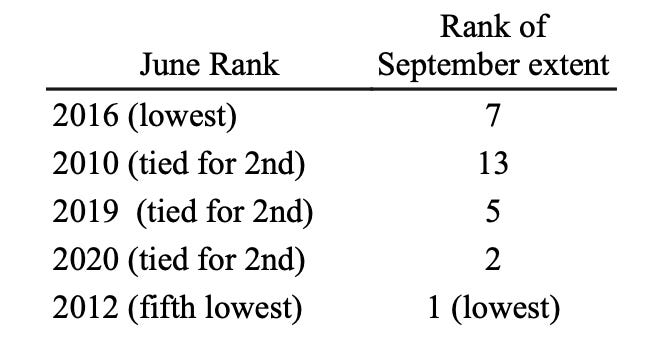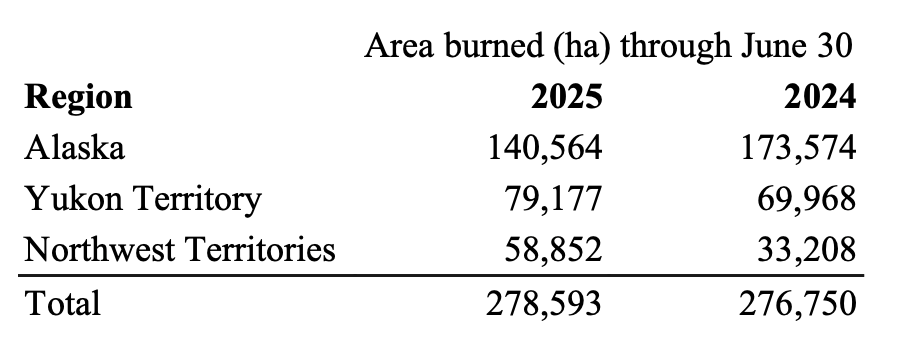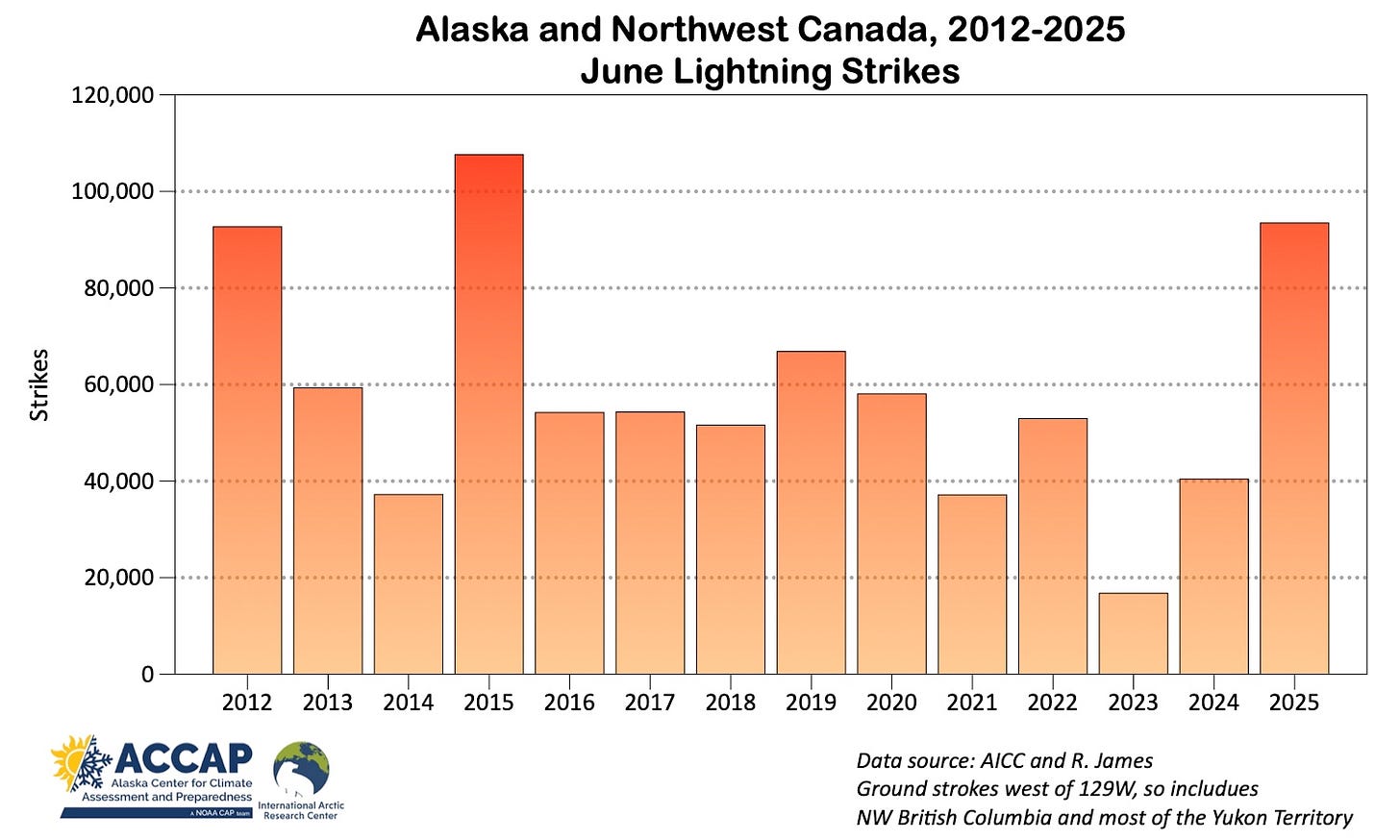June 2025 Sea Ice and Wildfire Summary
Arctic sea ice extent very low, Arctic wildfire not extreme
This post covers Arctic sea ice and wildfire in June. I’ll have a separate post focused on temperatures and precipitation after the ERA5 reanalysis data for June becomes available online.
Arctic Sea Ice
The farcical drama of the on-again/off-again termination of the Special Sensor Microwave Imager/Sounder (SSMIS) data from the U.S. Department of Defense, which is used internationally as input to sea ice monitoring, has overshadowed what should be the big story in sea ice. That story is that arctic sea ice extent is near record low as summer kicks into high gear. Based on National Snow and Ice Data Center analysis, the June average extent of 10.48 million km² is the second lowest in the 47-year satellite record. Only June 2016 was lower. The Japan Aerospace Exploration Agency (JAXA) analysis ranked this June’s sea ice extent as effectively tied with 2020 as the second lowest. From Fig. 1 it’s apparent that low ice relative to the historical median from the Barents Sea eastward to the Laptev Sea was the primary contributor to the low extent. The Barents Sea average June ice extent was the fourth lowest since 1979 and the Kara Sea third lowest. June sea ice extent in the Amerasian basin (East Siberian, Chukchi and Beaufort Seas) was slightly above the 1981-2010 average.

The daily Arctic-wide sea ice extent is shown in Fig. 2. After some recovery (relative to past years) during April and May, June extent was at record low levels on eight days during the month.

So, does especially low sea ice extent in June tell us anything about the end of summer extent? Table 1 shows the years with the five lowest June average extents 1979 to 2024 and then where the September average ice extent ranked.

Unsurprisingly, it’s not a one-to-one correlation. Three of the five lowest September average extents had a “top five” lowest June extent.
Wildfire
Wildfire area burned in northern North America through June was overall very similar to last year, as shown in Table 2, but with higher acreage in the Canadian north and a lower total in Alaska.

In the Russian far east, in spite of earlier than normal snowmelt over much of the Sahka Republic, based on the very limited information I’ve found, it appears most of the wildfire in Siberia has been relatively far south and mostly from the Lake Baikal region westward.
Significant wildfires burned over a wide swath of Alaska north of the Alaska Range. The Bear Creek Fire, near the Parks Highway between Healy and Anderson started June 19 and burned more than 11,500 ha( 28,500 acres) and resulted in the loss of some homes (exact numbers not yet available). Two fires north of Fairbanks required evacuation notices for a couple of subdivisions, while a fire south of Tok also threatened homes. In the Yukon Territory, there were several fires in the vicinity of Dawson, with the Quebec Creek and Rabbit Creek fires having both burned more than 11,000 ha each. In the Northwest Territories, the largest fires through June occurred in the Dehcho region, with Fire FS001-25, which started in May east of Fort Liard, accounting for about half of the area burned.
In Alaska, June started off with hardly any wildfire. Based on the Alaska Interagency Coordination Center analysis, just 38 burned in the first half of June, by far the lowest total on record (since 1993). A rapid change in the weather pattern starting the second week of the month brought much higher temperatures to much of Alaska north of Alaska Range, quickly followed by days with lots of lightning (more details on this sudden onset in my June 22 post, here).
Overall, June area burned in Alaska of 140,126 ha (346,258 acres) was above the 1993-2024 median though not dramatically so, as four years in the previous decade had higher totals.
In contrast to the rather typical area burned, total lightning strikes in and around Alaska were the highest in June since 2015. More than half of the lightning strikes occurred June 16-20, the highest five-day total since July 2019.






Not too surprising in the sea ice decline but I expect July/August wildfires should be at near record levels